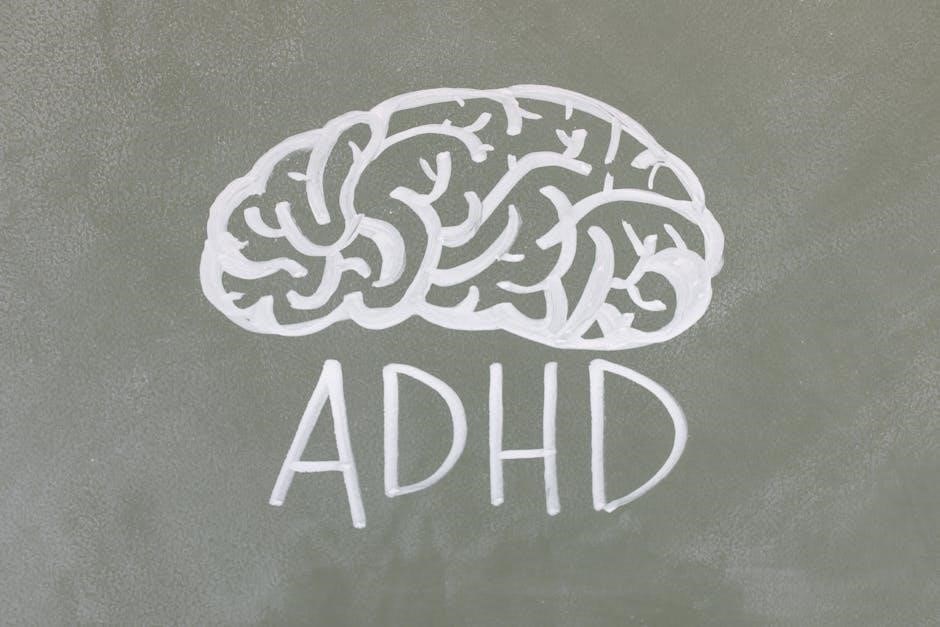Genetics practice problems are essential for mastering key concepts like Mendelian inheritance and Punnett squares․ These worksheets offer hands-on experience with genotype and phenotype analysis, available as PDF guides․
Overview of Genetics Practice Problems
Genetics practice problems are designed to help students master fundamental concepts like Mendelian inheritance, Punnett squares, and genotype-phenotype relationships․ These problems cover monohybrid and dihybrid crosses, allele probabilities, and pedigree analysis․ Worksheets often include multiple-choice questions, fill-in-the-blank exercises, and Punnett square setups․ They cater to various learning levels, from basic to advanced, ensuring comprehensive understanding․ Many resources, such as PDF guides and online tools, provide step-by-step solutions, enabling self-assessment and improvement․ Regular practice with these problems enhances critical thinking and problem-solving skills, essential for success in genetics․
Importance of Using Worksheets in Genetics Education
Worksheets are a vital tool in genetics education, providing students with hands-on practice to apply theoretical concepts․ They help reinforce understanding of complex topics like Mendelian inheritance and Punnett squares․ Regular use of worksheets enhances problem-solving skills and critical thinking․ They also allow students to track their progress and identify areas needing improvement․ Teachers often use worksheets to assess comprehension and guide instruction․ Additionally, worksheets like genetics practice problems in PDF formats offer a structured and accessible way to learn, making them indispensable for both classroom and self-study environments․ Consistent practice with worksheets builds confidence and mastery of genetic principles․

Mendelian Genetics Basics
Mendelian genetics explores heredity through laws of segregation and independent assortment․ Core concepts include genotypes, phenotypes, alleles, and dominant/recessive traits․ Worksheets simplify understanding these principles using Punnett squares․
Key Concepts: Genotypes, Phenotypes, and Alleles

Genotypes refer to the genetic makeup of an organism, consisting of alleles, while phenotypes are the physical traits expressed․ Alleles are variant forms of a gene, such as dominant or recessive․ Understanding these concepts is fundamental for solving genetics problems, as they form the basis of inheritance patterns․ Worksheets and practice problems often focus on identifying genotypes, determining phenotypes, and analyzing allele interactions․ Mastering these basics is essential for progressing to more complex genetic analyses, including Punnett squares and cross predictions․
Understanding Dominant and Recessive Traits
Dominant and recessive traits are fundamental concepts in genetics․ Dominant traits are expressed when an organism has at least one dominant allele, while recessive traits only appear when both alleles are recessive․ For example, in cats, short hair is dominant, and long hair is recessive․ Worksheets often include problems where students predict phenotypes based on genotypes, reinforcing this concept․ Practice problems also explore how these traits segregate in crosses, helping learners grasp the basics of Mendelian inheritance and apply them to real-world scenarios․

Practicing with Punnett Squares
Punnett squares are tools used to predict the genetic outcomes of crosses․ They visualize gamete combinations, aiding in understanding genetic probabilities and Mendelian inheritance patterns․
Setting Up Punnett Squares for Monohybrid Crosses
Setting up Punnett squares for monohybrid crosses involves determining the genotypes of the parents and creating a grid to visualize gamete combinations․ For example, a cross between a homozygous dominant (AA) and a homozygous recessive (aa) individual results in all offspring being heterozygous (Aa)․ Each parent’s alleles are listed on the axes of the square, and their combination in the grid shows the possible offspring genotypes and their probabilities․ This method is foundational for predicting genetic outcomes and understanding inheritance patterns․ Regular practice with these problems enhances problem-solving skills in genetics․
Solving Dihybrid Cross Problems
Solving dihybrid cross problems involves analyzing the inheritance of two traits simultaneously․ Start by identifying the genotypes of the parents and determining the possible gametes each can produce․ Construct a Punnett square with four sections for each parent’s alleles․ Combine the gametes to fill the square, calculating the probability of each genotype and phenotype․ Common phenotypic ratios, such as 9:3:3:1, often emerge․ Practice dihybrid crosses helps in understanding how multiple traits are inherited together and reinforces concepts like independent assortment․ Regular practice with these problems builds confidence in solving complex genetic scenarios․

Genotype and Phenotype Determination
Genotype refers to the genetic makeup, while phenotype is the physical expression of traits․ Understanding dominant and recessive alleles is key to predicting outcomes in genetic crosses․
Identifying Heterozygous and Homozygous Genotypes
Genotypes are composed of two alleles, and their classification is crucial in genetics․ A homozygous genotype has two identical alleles (e․g․, AA or aa), while a heterozygous genotype has two different alleles (e․g․, Aa)․ This distinction determines how traits are inherited and expressed․ Worksheets often include exercises where students analyze genotypes, such as determining whether a genotype is homozygous dominant, homozygous recessive, or heterozygous․ Practice problems also involve matching genotypes to phenotypes, enhancing understanding of genetic principles like dominance and recessiveness․
Predicting Phenotypic Ratios in Offspring
Predicting phenotypic ratios involves analyzing genetic crosses to determine the likelihood of specific traits in offspring․ Worksheets often include monohybrid and dihybrid crosses, requiring students to apply Mendel’s laws of segregation and independent assortment․ By setting up Punnett squares, learners calculate probabilities for dominant and recessive traits․ For example, a monohybrid cross (Aa x Aa) yields a 3:1 phenotypic ratio, while dihybrid crosses (AaBb x AaBb) result in a 9:3:3:1 ratio․ These exercises enhance understanding of genetic probabilities and inheritance patterns, essential for mastering genetics concepts․

Advanced Genetics Problems
Advanced problems involve analyzing pedigrees, calculating genetic probabilities, and solving complex crosses․ These exercises enhance critical thinking and apply genetic principles to real-world scenarios effectively․
Analyzing Pedigrees for Genetic Traits
Analyzing pedigrees helps identify inheritance patterns of genetic traits․ Students learn to determine genotypes and phenotypes across generations․ This involves recognizing dominant and recessive traits, sex-linked inheritance, and incomplete dominance․ Pedigree analysis also helps predict probabilities of trait occurrence; Worksheets often include complex family trees, requiring students to apply Mendelian laws․ This skill is crucial for understanding genetic disorders and counseling․ Practice problems include identifying carriers, affected individuals, and calculating risk percentages․ Advanced problems may involve multiple generations and complex traits, enhancing critical thinking and problem-solving abilities․ These exercises bridge theory and practical application in genetics․
Calculating Genetic Probabilities
Calculating genetic probabilities involves determining the likelihood of specific traits being passed to offspring․ This is done using Punnett squares, probability rules, and genetic crosses․ Problems often require finding probabilities for dominant or recessive traits, such as 25%, 50%, or 75% chances․ Advanced questions may involve dihybrid or sex-linked traits, requiring combined probabilities․ Worksheets provide practice in applying these calculations, ensuring understanding of genetic principles․ Mastering probability calculations is essential for predicting outcomes in genetics, aiding in real-world applications like genetic counseling and evolutionary studies․

Resources for Genetics Practice
Genetics practice problems are widely available in PDF worksheets and online tools․ These resources provide comprehensive exercises covering Mendelian genetics, Punnett squares, and advanced genetic concepts for all skill levels․
Recommended Worksheets and PDF Guides
Various genetics practice worksheets and PDF guides are available online, catering to different skill levels․ These resources include exercises on Mendelian genetics, Punnett squares, and advanced genetic concepts․ Many worksheets are designed for high school and college students, offering clear instructions and examples․ PDF guides often feature solved problems, making them ideal for self-study․ Platforms like Google Classroom and educational websites provide downloadable materials, ensuring easy access for learners․ These tools are invaluable for reinforcing genetics concepts through practical exercises and real-world applications․
Online Tools for Solving Genetics Problems
Online tools like Khan Academy, Genetics Lab Simulator, and Punnett Square Calculator simplify problem-solving․ These platforms offer interactive exercises, simulations, and real-time calculations․ Tools such as Genetics Problem Solver provide step-by-step solutions for monohybrid and dihybrid crosses․ Websites like PhET Interactive Simulations allow visualization of genetic principles, enhancing understanding․ Additionally, online forums and educational apps offer practice quizzes and video tutorials․ These resources cater to various learning styles, making genetics more accessible․ They are ideal for students seeking additional practice or instructors looking to supplement classroom materials․
Mastering genetics requires practice․ Worksheets and online tools provide hands-on experience, reinforcing concepts like Punnett squares and genotype analysis․ Regular practice improves problem-solving skills and understanding of genetic principles․
Final Tips for Mastering Genetics Problems
To excel in genetics, consistently practice with worksheets and online tools․ Start by setting up Punnett squares correctly and identifying genotypes․ Always determine parental gametes before predicting offspring ratios․ For complex problems, break them into smaller parts and use diagrams․ Reviewing pedigree analysis and probability calculations is crucial․ Use both physical worksheets and digital resources for varied practice․ Regularly test yourself with dihybrid and incomplete dominance questions․ Seek feedback and clarify doubts promptly․ Combining theoretical knowledge with practical exercises ensures long-term mastery of genetic concepts and problem-solving skills․




















































